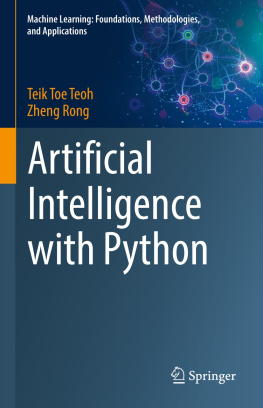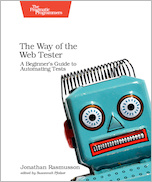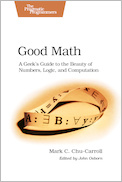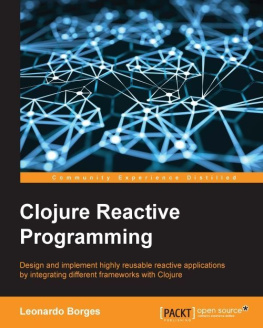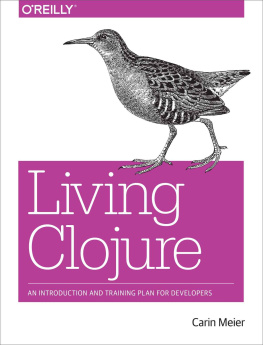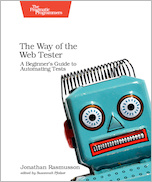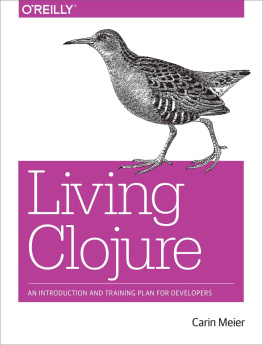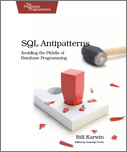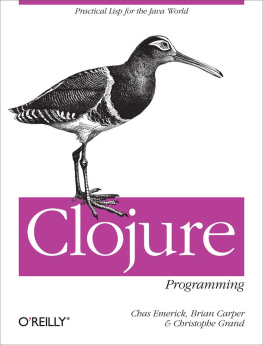Mark Watson - Practical Artificial Intelligence Programming With Clojure
Here you can read online Mark Watson - Practical Artificial Intelligence Programming With Clojure full text of the book (entire story) in english for free. Download pdf and epub, get meaning, cover and reviews about this ebook. year: 2021, publisher: leanpub.com, genre: Home and family. Description of the work, (preface) as well as reviews are available. Best literature library LitArk.com created for fans of good reading and offers a wide selection of genres:
Romance novel
Science fiction
Adventure
Detective
Science
History
Home and family
Prose
Art
Politics
Computer
Non-fiction
Religion
Business
Children
Humor
Choose a favorite category and find really read worthwhile books. Enjoy immersion in the world of imagination, feel the emotions of the characters or learn something new for yourself, make an fascinating discovery.

- Book:Practical Artificial Intelligence Programming With Clojure
- Author:
- Publisher:leanpub.com
- Genre:
- Year:2021
- Rating:3 / 5
- Favourites:Add to favourites
- Your mark:
- 60
- 1
- 2
- 3
- 4
- 5
Practical Artificial Intelligence Programming With Clojure: summary, description and annotation
We offer to read an annotation, description, summary or preface (depends on what the author of the book "Practical Artificial Intelligence Programming With Clojure" wrote himself). If you haven't found the necessary information about the book — write in the comments, we will try to find it.
Practical Artificial Intelligence Programming With Clojure — read online for free the complete book (whole text) full work
Below is the text of the book, divided by pages. System saving the place of the last page read, allows you to conveniently read the book "Practical Artificial Intelligence Programming With Clojure" online for free, without having to search again every time where you left off. Put a bookmark, and you can go to the page where you finished reading at any time.
Font size:
Interval:
Bookmark:

This book is for sale at http://leanpub.com/clojureai
This version was published on 2021-05-21

* * * * *
This is a Leanpub book. Leanpub empowers authors and publishers with the Lean Publishing process. Lean Publishing is the act of publishing an in-progress ebook using lightweight tools and many iterations to get reader feedback, pivot until you have the right book and build traction once you do.
* * * * *
The latest edition of this book is always available for purchase at https://leanpub.com/clojureai. You can also download a free copy from my website https://markwatson.com. You are welcome to take free copies of all of my eBooks and to share them. I offer the purchase option for readers who wish to directly support my work.
I have been developing commercial Artificial Intelligence (AI) tools and applications since the 1980s and I usually use the Lisp languages Common Lisp, Clojure, Racket Scheme, and Gambit Scheme. This book contains code that I wrote for myself and I am wrapping it in a book in the hopes that my code and this book will also be useful to you, dear reader.
 Mark Watson
Mark WatsonI wrote this book for both professional programmers and home hobbyists who already know how to program in Clojure and who want to learn practical AI programming and information processing techniques. I have tried to make this an enjoyable book to work through. In the style of a cook book, the chapters can be studied in any order.
This book uses two of the examples in my Java AI book that is also available for purchase at Leanpub.com and as a free download from my personal web site. I replicate these two bits of Java code in the GitHub repository for this book:
https://github.com/mark-watson/Clojure-AI-Book-Code
Git pull requests with code improvements will be appreciated by me and the readers of this book.
To be clear, I actually like Common Lisp slightly more than Clojure, even though Clojure is a beautifully designed modern language and Common Lisp is ancient and has defects. Then why do I use Clojure? The Java ecosystem is huge and Clojure takes full advantage of Java interoperability. Just as I sometimes need access to the rich Java ecosystem I also need Python libraries for some of my projects. Here we will use the libpython-clj library for that. I also like the language Hy that has a Clojure-like syntax and wraps the Python language. If you use Python then my book A Lisp Programmer Living in Python-Land: The Hy Programming Language might be of interest.
Using the Java ecosystem is an important aspect of Clojure development and in the few cases where I use Java libraries from my Java AI book, my Clojure examples illustrate how to convert Clojure seq data to Java arrays, handle returned Java data values, etc.
I have been interested in AI since reading Bertram Raphaels excellent book Thinking Computer: Mind Inside Matter in the early 1980s. I have also had the good fortune to work on many interesting AI projects including the development of commercial expert system tools for the Xerox LISP machines and the Apple Macintosh, development of commercial neural network tools, application of natural language and expert systems technology, medical information systems, application of AI technologies to Nintendo and PC video games, and the application of AI technologies to the financial markets. I have also applied statistical natural language processing techniques to analyzing social media data from Twitter and Facebook. I worked at Google on their Knowledge Graph and I managed a deep learning team at Capital One where I was awarded 55 US patents.
I enjoy AI programming, and hopefully this enthusiasm will also infect you.
I produced the manuscript for this book using the leanpub.com publishing system and I recommend leanpub.com to other authors.
Editor: Carol Watson
Thanks to the following people who found typos in this and earlier book editions: none so far!
In the last ten years Deep Learning has been so successful for solving difficult problems in areas like image understanding and natural language processing (NLP) that many people now equate Deep Learning with AI. While I think this is a false equivalence, I have often used plain old fashioned neural networks and Deep Learning models in my work.
One limitation of conventional back propagation neural networks is that they are limited to the number of neuron layers that can be efficiently trained (the vanishing gradients problem).
Deep learning uses computational improvements to mitigate the vanishing gradient problem like using ReLu activation functions rather than the more traditional Sigmoid function, and networks called skip connections where some layers are initially turned off with connections skipping to the next active layer.
Modern deep learning frameworks like DeepLearning4j, TensorFlow, and PyTorch are easy to use and efficient. We use DeepLearning4j in this chapter because it is written in Java and easy to use with Clojure. In a later chapter we will use the Clojure library libpython-clj to access other deep learning-based tools like the Hugging Face Transformer models for question answering systems as well as the spaCy Python library for NLP.
I have used GAN (generative adversarial networks) models for synthesizing numeric spreadsheet data, LSTM (long short term memory) models to synthesize highly structured text data like nested JSON, and for NLP (natural language processing). Several of my 55 US patents use neural network and Deep Learning technology.
The Deeplearning4j.org Java library supports many neural network algorithms. We will look at one simple example so you will feel comfortable integrating Deeplearning4j with your Clojure projects and a later optional-reading section details other available types of models. Note that I will often refer to Deeplearning4j as DL4J.
We start with a simple example of a feed forward network using the same University of Wisconsin cancer database that we will also use later in the chapter on anomaly detection.
There is a separate repository of DL4J examples that you might want to look at since any of these Java examples that look useful for your projects can be used in Clojure using the example here to get started.
Feed forward classification networks are a type of deep neural network that can contain multiple hidden neuron layers. In the example here the adjacent layers are fully connected (all neurons in adjacent layers are connected). The DL4J library is written to scale to large problems and to use GPUs if you have them available.
In general, simpler network architectures that can solve a problem are better than unnecessarily complicated architectures. You can start with simple architectures and add layers, different layer types, and parallel models as needed. For feed forward networks model complexity has two dimensions: the numbers of neurons in hidden layers, and the number of hidden layers. If you put too many neurons in hidden layers then the training data is effectively memorized and this will hurt performance on data samples not used in training (referred to as out of sample data). In practice, I starve the network by reducing the number of hidden neurons until the model has reduced accuracy on independent test data. Then I slightly increase the number of neurons in hidden layers. This technique helps avoid models simply memorizing training data (the over fitting problem).
Font size:
Interval:
Bookmark:
Similar books «Practical Artificial Intelligence Programming With Clojure»
Look at similar books to Practical Artificial Intelligence Programming With Clojure. We have selected literature similar in name and meaning in the hope of providing readers with more options to find new, interesting, not yet read works.
Discussion, reviews of the book Practical Artificial Intelligence Programming With Clojure and just readers' own opinions. Leave your comments, write what you think about the work, its meaning or the main characters. Specify what exactly you liked and what you didn't like, and why you think so.


